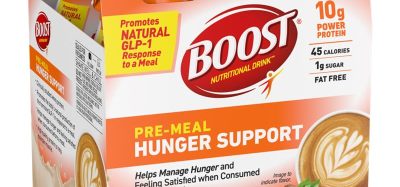Food additives: consumers’ queries answered
- Like
- Digg
- Del
- Tumblr
- VKontakte
- Buffer
- Love This
- Odnoklassniki
- Meneame
- Blogger
- Amazon
- Yahoo Mail
- Gmail
- AOL
- Newsvine
- HackerNews
- Evernote
- MySpace
- Mail.ru
- Viadeo
- Line
- Comments
- Yummly
- SMS
- Viber
- Telegram
- Subscribe
- Skype
- Facebook Messenger
- Kakao
- LiveJournal
- Yammer
- Edgar
- Fintel
- Mix
- Instapaper
- Copy Link
Posted: 21 November 2018 | IFST | No comments yet
In your role as a food producer, you’re sure to face questions from the public, especially in the wake of recent high-profile cases of contamination, recalls and mislabelling. The UK’s IFST has produced information to pass on to customers, outlined here.


Food additives are substances added to foods and drinks during manufacture, processing and packaging. They may be added to ensure safety and to improve or maintain key attributes, such as taste or appearance. European legislation defines food additives as substances not normally consumed as food itself, but which are added to food intentionally for a technological purpose described in the regulations, such as the preservation of food. Not all manufactured foods require additives as it depends on the process and packaging used, required shelf life and appearance.
Why are food additives used?
Food additives perform a wide variety of functions in foods, for example preservatives, acidity regulators and antioxidants keep food in good condition, thus reducing waste, whilst preserving the nutritional quality. Colours, sweeteners, emulsifiers and stabilisers contribute to the product quality and improve the eating experience.
What are E numbers?
E numbers show that additives have been evaluated and approved by the European Food Safety Authority (EFSA) for use in the European Union (EU). Other countries may use different systems to categorise additives.
What do food additives do?
They are grouped by technical function:
Acidity regulators: change or maintain acidity/ alkalinity (pH) eg, sodium citrate (E331).
Anticaking agents: prevent clumping ensuring powders and granules are free‑flowing.
Antioxidants: stop oxidation, thereby extending shelf life eg, ascorbic acid (E300/vitamin C).
Colours: impart, enhance or restore colour, compensating for changes during processing, or boosting naturally occurring weaker colours.
Emulsifiers: prevent ingredients from separating and give mayonnaise, ice cream and margarine their smooth texture
Flavour enhancers: strengthen savoury flavours e.g. monosodium glutamate, (E621) which is also present naturally in some foods eg, cheese, tomatoes.
Flour treatment agents: added to flour or dough to improve baking quality and maintain consistency. Gelling agents, thickeners and stabilisers: provide texture and consistency eg, agar, gums (locust bean, guar, xanthan)
Preservatives: inhibit mould or bacteria growth prolonging product shelf life, so foods do not spoil and are safer for longer.
Sweeteners: intense sweeteners, eg, aspartame and saccharin, are many times sweeter than sugar, hence are used in smaller quantities and contribute fewer calories.
Bulk sweeteners, such as polyols, are not broken down into acids that cause tooth decay.
Others: eg, anti-foaming, bulking, firming, foaming, raising and glazing agents; humectants, carriers, modified starches, packaging gases, propellants and sequestrants.
Food additives and what they do
Many additives serve several roles e.g. sodium hydrogen carbonate (E500/baking soda/ bicarbonate of soda) is a raising agent and an acidity regulator.
Are all additives artificial?
Many additives are found naturally in foods and plants and are extracted for use, e.g. beetroot extract (E162) adds colour to confectionery, yogurt and soft drinks. Others may or may not be found in nature but are made synthetically. They are all evaluated and regulated in the same way.
Are they controlled?
Many additives are only permitted in certain foods and at maximum usage levels. This relates to quantities ‘as sold’ but the regulators also take into account additives used in dried or concentrated foods and drinks, and then calculations are based on the product once it has been reconstituted (following manufacturers’ instructions).
How do we know if additives are in our food?
Only additives considered safe, and for which there is a technological need, are authorised in the EU. The UK Food Standards Agency (FSA) ensures that the regulations are applied in the UK. Most pre-packaged food require labelling with certain mandatory information, regulated to ensure consumers have the correct information to confidently make informed food choices. Ingredients appear in decreasing order on the label, therefore additives usually appear at, or near, the end of the list, as they are used at low levels. They are declared using their function (e.g. Colour), name (Curcumin) and/or E number (E100), thus avoiding complicated chemical names e.g. Emulsifier: monoand di-glycerides of fatty acids (E471).
Warnings on food and drink that contain certain additives
Examples include foods containing any of six EU-authorised food colours linked to hyperactivitiy in some children [E102 (Tartrazine), E104 (Quinoline yellow), E110 (Sunset yellow), E122 (Carmoisine), E124 (Ponceau 4R), E129 (Allura red)], which must carry the warning: ‘xxx’ (name or E number) may have an adverse effect on activity and attention in children.’ When polyols are used, the label will state ‘excessive consumption may cause laxation’ and when aspartame is added, the label must have the warning ‘contains a source of phenylalanine’. Phenylalanine is an essential amino acid but must be avoided by certain people with an intolerance.
To be included in the EU-approved list, additives must comply with the conditions set out in the legislation, which states that they should not present a risk to consumers, should be technologically justified, and should not mislead the consumer. Approved food additives have advantages and consumer benefits, such as preserving the nutritional quality of food, enhancing its keeping quality or stability during storage and transportation, and aiding manufacture and processing
About the Institute of Food Science & Technology (IFST)
Formed in 1964, the IFST is the UK’s leading professional body for those involved in all aspects of food science and technology. The Institute’s core aim is the advancement of food science and technology based on impartial science and knowledge sharing. Its membership comprises individuals from a range of backgrounds, from students to experts, working across a wide range of disciplines within the sector.
References
- EU Rules on Food Additives https://ec.europa.eu/food/ safety/food_improvement_agents/additives/eu_rules_en FSA
- Advice on Food additives https://www.food.gov.uk/ safety-hygiene/food-additives
- FSA Guidance on EU approved additives and E numbers https://www.food.gov.uk/business-guidance/euapproved-additives-and-e-numbers
The rest of this content is restricted - login or subscribe free to access


Why subscribe? Join our growing community of thousands of industry professionals and gain access to:
- bi-monthly issues in print and/or digital format
- case studies, whitepapers, webinars and industry-leading content
- breaking news and features
- our extensive online archive of thousands of articles and years of past issues
- ...And it's all free!
Click here to Subscribe today Login here
Issue
Related topics
Allergens, Contaminants, Flavours & colours, Food Safety, Health & Nutrition, Ingredients, New product development (NPD), Packaging & Labelling, Regulation & Legislation, Shelf life, The consumer
Related organisations
European Food Safety Authority (EFSA), Institute of Food Science and Technology (IFST)









